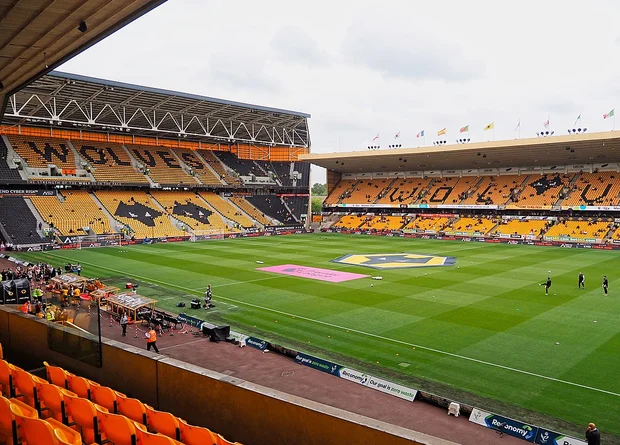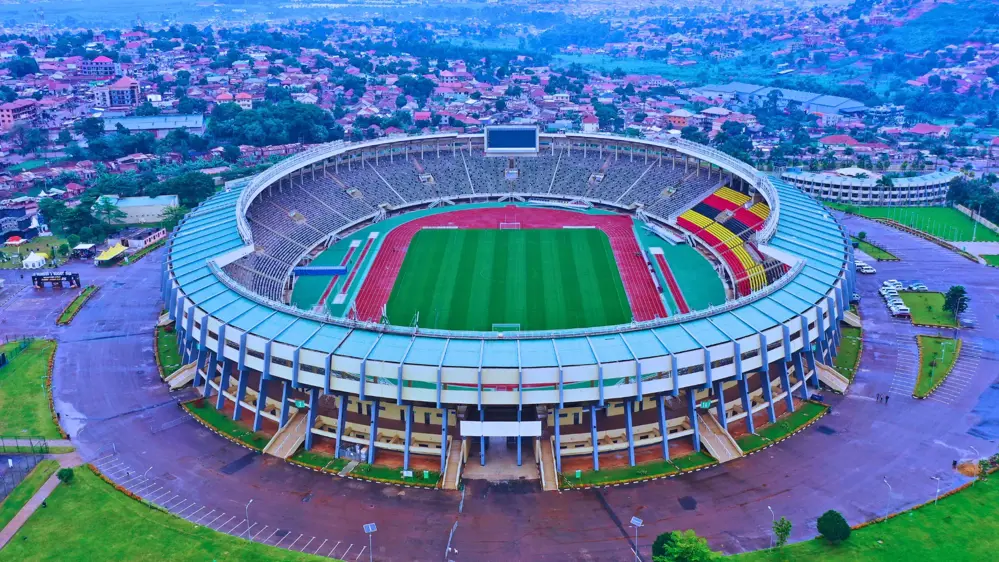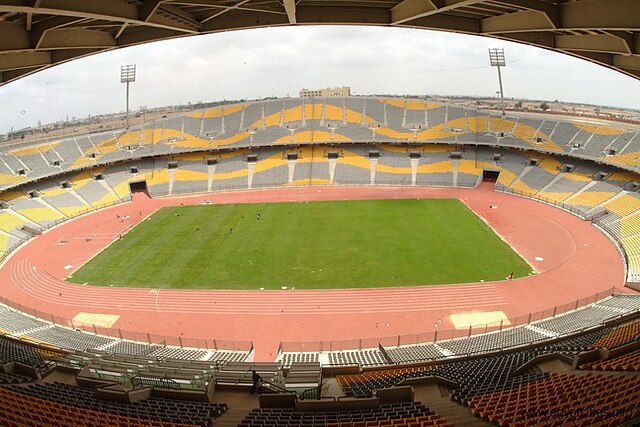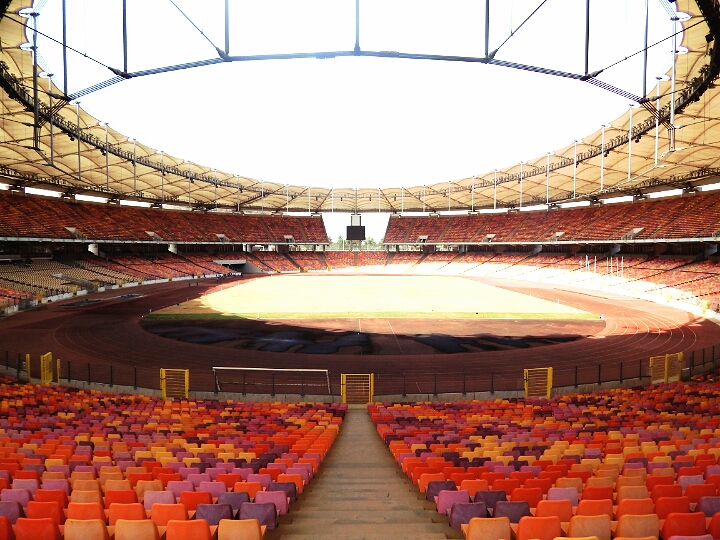Molineux Stadium History and Legacy: A Comprehensive Overview

Join us on this journey as we explore the legacy, capacity, location, early days history, golden years, and modern era that has shaped Molineux Stadium into what it is today. From its humble beginnings as a simple field to one of England’s most iconic stadiums, Molineux has witnessed some truly remarkable moments throughout its existence.
The Early History of Molineux Stadium
Molineux Stadium’s history dates back to the late 19th century when a group of football enthusiasts formed St. Luke’s FC and played their matches on a field in Molineux Street. However, after several disputes with the landlord, the team was forced to find a new home.
In 1889, Sir Jack Hayward leased some land at Waterloo Road for the purpose of building a new stadium. The first game played there was between Wolves and Notts County on September 7th of that year.
The original stadium had only one stand – the John Ireland Stand – which could hold up to 1,500 spectators. However, as time went by and the Wolves’ success on the pitch grew, so did the demand for more seating areas.
By 1895, three more stands were built: North Bank Terrace (later renamed Billy Wright Stand), South Bank Terrace (later replaced by Steve Bull Stand), and Waterloo Road End (later replaced by Stan Cullis Stand). These additions brought Molineux’s capacity up to around 20,000 spectators.
Despite facing financial difficulties in its early years due to high construction costs and low attendance figures, Molineux Stadium persevered through hard work and dedication from both club officials and fans alike.
Molineux Stadium Location And Capacity
Molineux Stadium is a football stadium situated in Wolverhampton, West Midlands, England. The stadium address is Waterloo Road, Wolverhampton WV1 4QR, United Kingdom. The stadium is the home ground of Wolverhampton Wanderers Football Club and has a seating capacity of around 32,000 spectators.
See Also: King Power Stadium: Here’s everything you need to know
The Club’s Golden Years
Wolves experienced their golden years in the 1950s, winning three First Division titles and reaching two FA Cup finals. The team featured legendary players such as Billy Wright, Ron Flowers, and Johnny Hancocks.
Under the management of Stan Cullis, Wolves were a dominant force in English football during this period. They won their first league title in 1954 and followed it up with another title win just two seasons later. In between those triumphs was a heartbreaking loss to Blackburn Rovers in the 1955 FA Cup final.
The team’s success continued into the latter half of the decade when they lifted their third league championship trophy in six years. This time around they also made amends for their previous cup final defeat by beating Leicester City at Wembley to lift the FA Cup.
Wolves’ golden era came to an end after Cullis left his position as manager in 1964 due to declining results. However, his legacy lives on at Molineux Stadium where he is still regarded as one of the club’s greatest managers ever.
Wolves fans will always remember fondly these successful times that brought so much glory and pride not only to Wolverhampton but also England itself.
The Modern Era
The Modern Era of Molineux Stadium is characterized by significant upgrades and renovations to the stadium that have allowed it to keep up with modern standards. In 1993, a new Stan Cullis stand was built, which added almost 10,000 seats to the stadium’s capacity. This expansion helped make Molineux one of the largest football stadiums in England at the time.
Further improvements were made in 2011 when the Steve Bull Stand was also renovated and expanded. These upgrades included better seating arrangements and improved facilities for spectators.
In addition to these physical changes, there have been several technological advancements that have further enhanced the matchday experience at Molineux Stadium. For example, high-definition video screens were installed throughout the stadium in 2019 so that fans could watch replays and highlights from different angles throughout matches.
These updates have not only improved fan experiences but also helped Wolverhampton Wanderers FC remain competitive on both national and international stages.
The Molineux Stadium Legacy
Molineux Stadium has a rich history that spans over a century, and it holds an important place in the hearts of Wolverhampton Wanderers fans. The stadium’s legacy is one of passion, pride, and dedication to the sport of football.
One aspect of the stadium’s legacy is its impressive capacity for hosting major events. Molineux was chosen as a venue for several matches during the 1966 World Cup, which was held in England. In recent years, it has hosted Rugby League Four Nations games and concerts featuring well-known artists such as Bon Jovi.
Another part of Molineux Stadium’s legacy is its contribution to developing talent in English football. Over the years, many young players have honed their skills on this historic pitch before moving on to play at higher levels. Some notable names include Steve Bull, Ron Flowers, Derek Dougan and Billy Wright – who went on to become Wolves’ all-time record appearance holder.
Moreover,Molineux Stadium remains an iconic symbol of local pride for Wolverhampton residents.
The city’s residents have fond memories associated with this place since it served as home turf where they witnessed some legendary moments throughout their lives.
Overall,the stadium will continue to inspire generations after generations thanks to its strong roots within Wolverhampton’s community while serving as one among very few historic stadiums left in England today that still retain much of their original character and charm.
People Also Search For:
- Selhurst Park: A Guide to Getting the Most Out of Your Visit
- Facilities at Craven Cottage: What You Can Expect on Match Day
- Uncovering the Legacy of Vitality Stadium: AFC Bournemouth’s Home
Conclusion
From its humble beginnings as a field used by local schools and cricket teams, Molineux Stadium has become an iconic landmark in the city of Wolverhampton and a symbol of football history and legacy.
The stadium has witnessed some incredible moments throughout the years, both on and off the pitch. From Wolves’ golden era under Stan Cullis to hosting World Cup matches, Molineux has always been at the forefront of English football.
Today, it stands as one of England’s most historic stadiums with an impressive list of accolades that have helped cement its place in sporting history.
As we look towards the future, there is no doubt that Molineux will continue to be a venue for great entertainment and unforgettable experiences for fans all over the world.
Molineux Stadium may just be bricks and mortar but it is so much more than that – It represents memories, traditions, passion, triumphs and heartbreaks. It embodies everything that makes football such a special sport.







One Comment